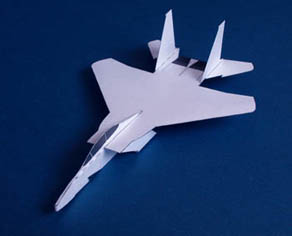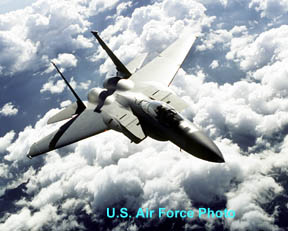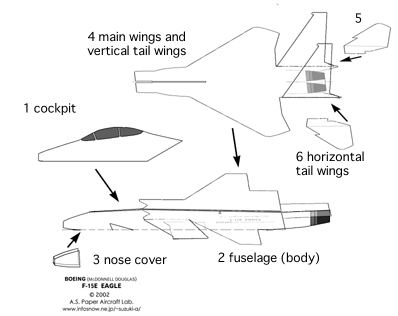



The F-15 Eagle is an all-weather, extremely maneuverable, tactical fighter designed to permit the U.S. Air Force to gain and maintain air superiority in aerial combat. The F-15's superior maneuverability and acceleration are achieved through high engine thrust-to-weight ratio and low wing loading. Low wing-loading (the ratio of aircraft weight to its wing area) is a vital factor in maneuverability and, combined with the high thrust-to-weight ratio, enables the aircraft to turn tightly without losing airspeed. The first F-15A flight was made in July 1972, and in January 1976, the first Eagle destined for a combat squadron was delivered. In addition to the U.S. military, the F-15 serves Japan, Saudi Arabia and Israel. Recently, Boeing F-15K Selected by the Republic of Korea as F-X Fighter. The F-15E is a two-seat, dual-role, totally integrated fighter for all-weather, air-to-air and deep interdiction missions. F-15 was contracted by McDonnell Douglas Corp. and now F-15 is produced by Boeing Company.
How to manufacture F-15E EAGLE

Download the drawing and print it on thick paper. (Refer to Material
and Instrument.) Set up your printer for thick paper.
Cut the paper according to the thick line. Start with body of plane.
Fold up as dash and dot line " _ . _ . _" , and fold down as dash line
" - - - - " . First, make cockpit 1. Then paste cockpit inside the body 2. Paste nose cover at nose of body. Cut out the catapulting hook. Fold air intake of engine and paste on the lower side of body. Fold the vertical tail wings at right angle. Paste horizontal tail wings 5, 6 under the vertical fin. Attach the wing 4 on the body. Dihedral angle of main wings is 0 degree. No balance weight is needed.
Adjustment
Bend front edge of main wings slightly as a bow shape to make camber.
Form washout (decrease angle of incidence at wing tip) at the tip of main
wings to avoid tip stall and increase stability.
Spray paint thinly if fly outdoor.
Small dihedral angle may increase stability for outdoor flight.